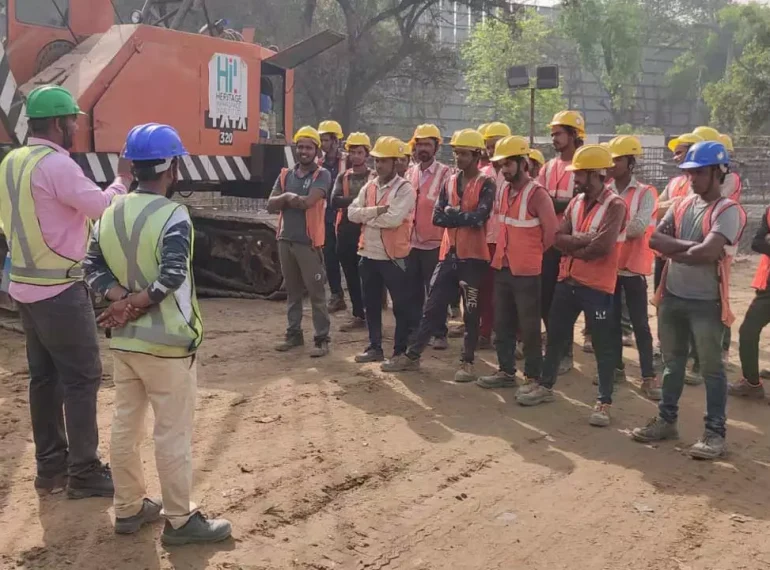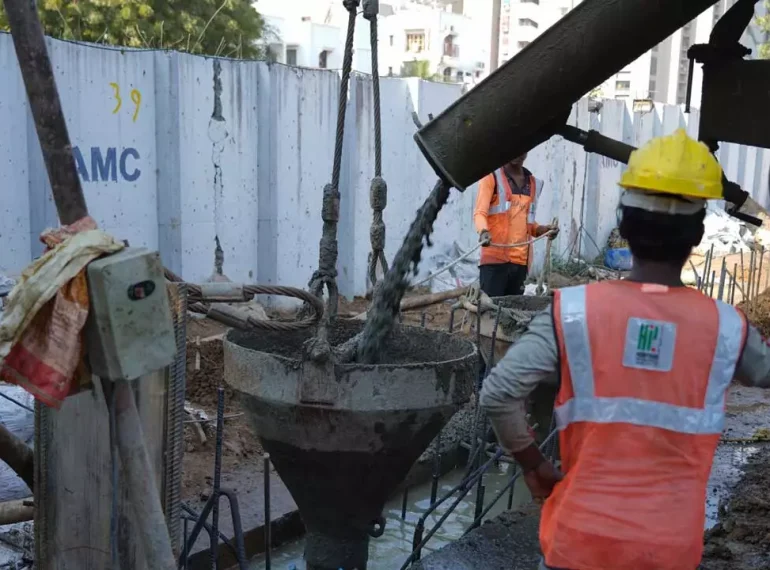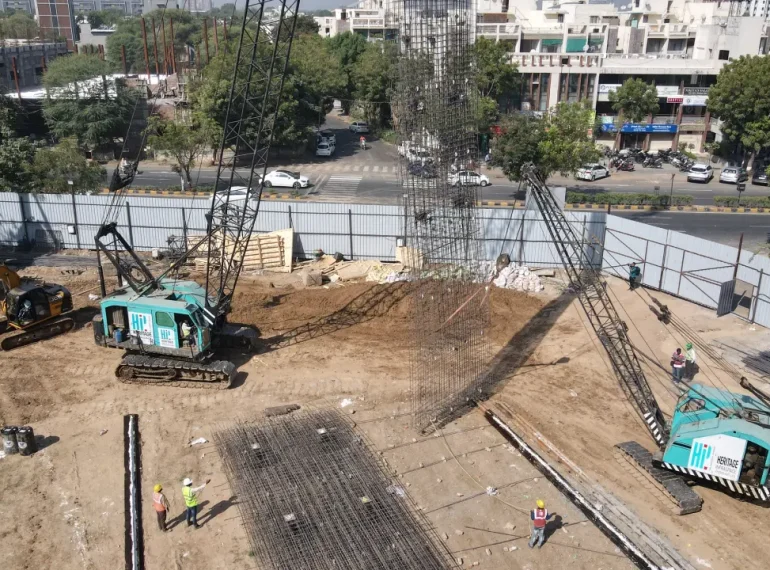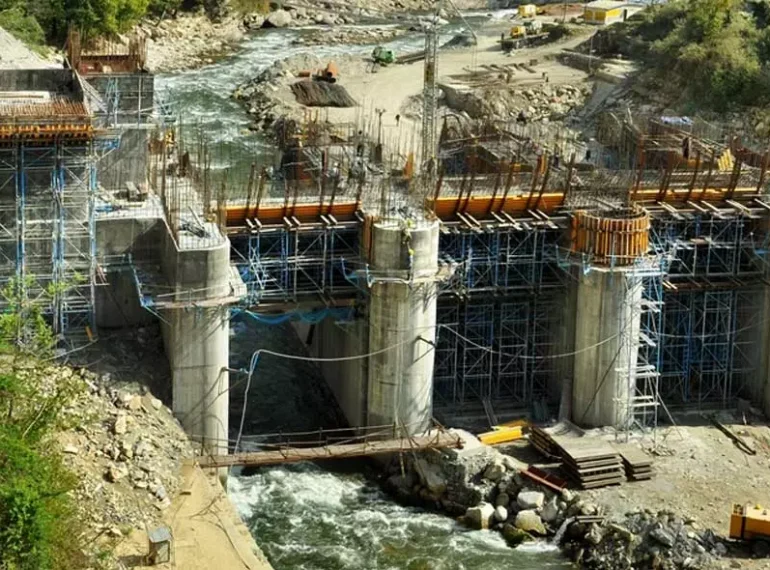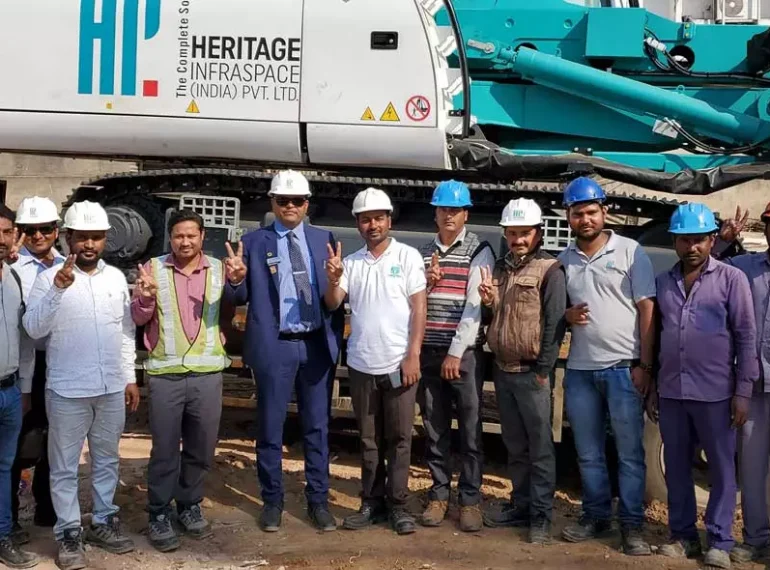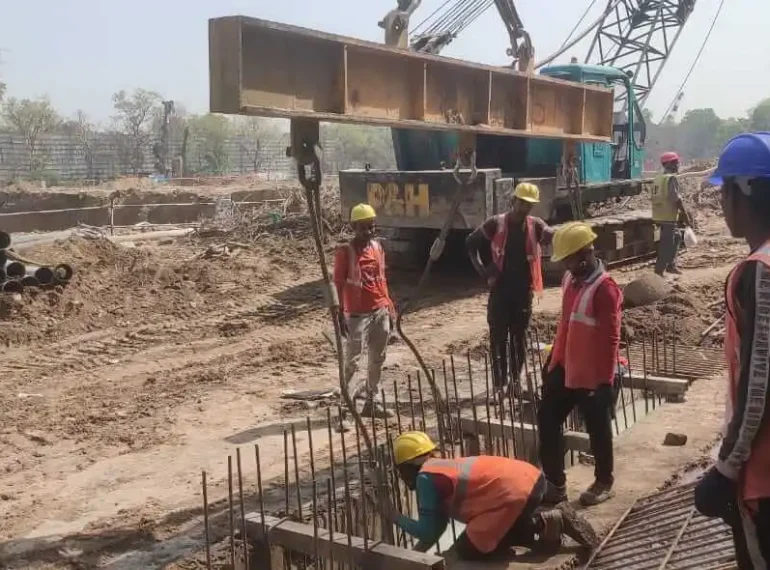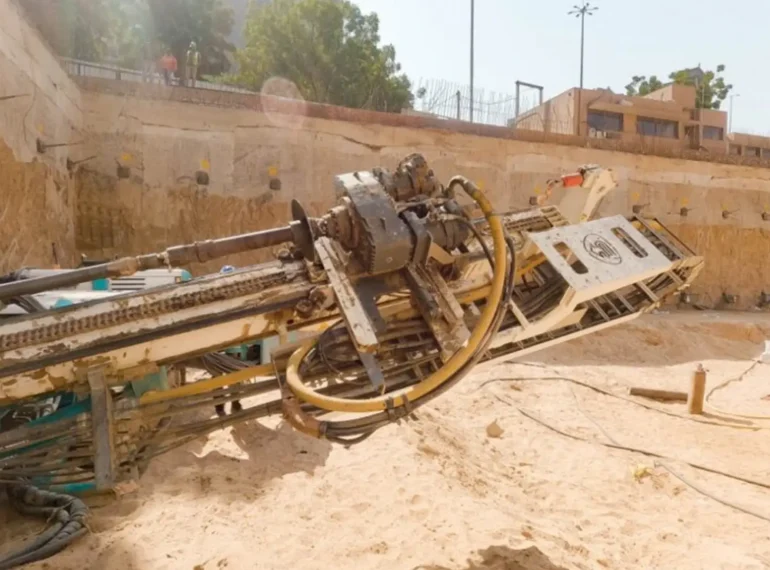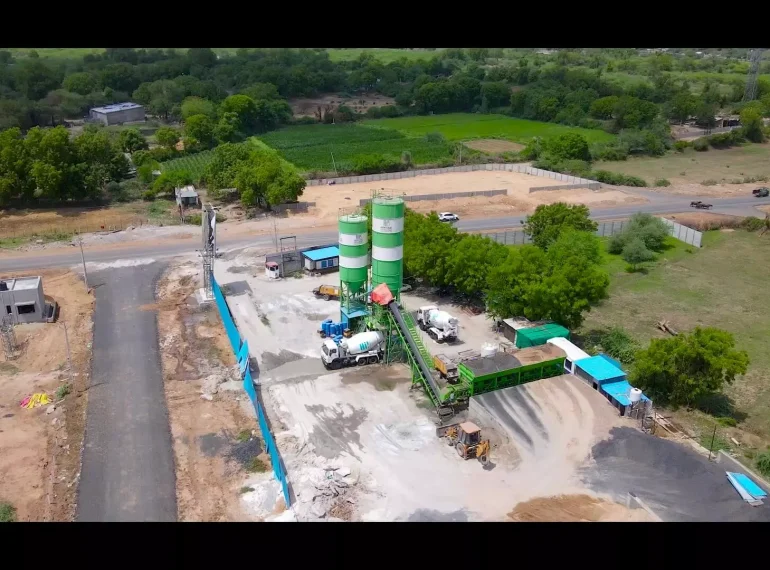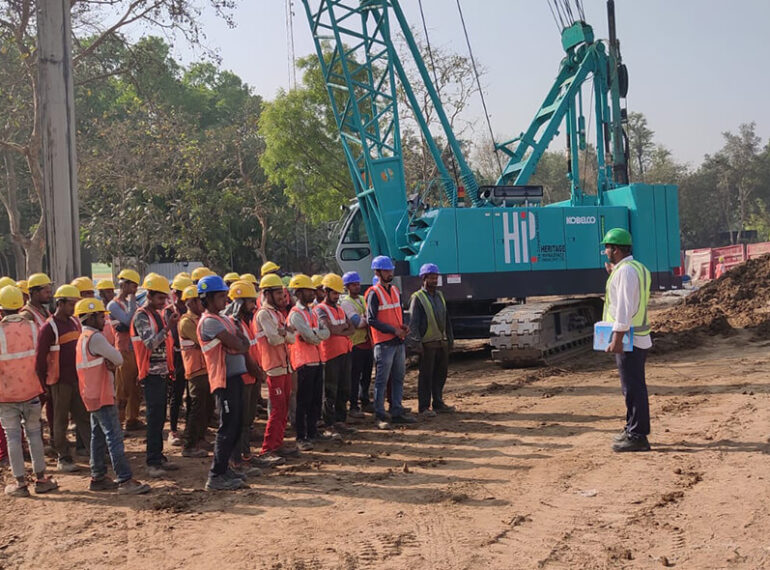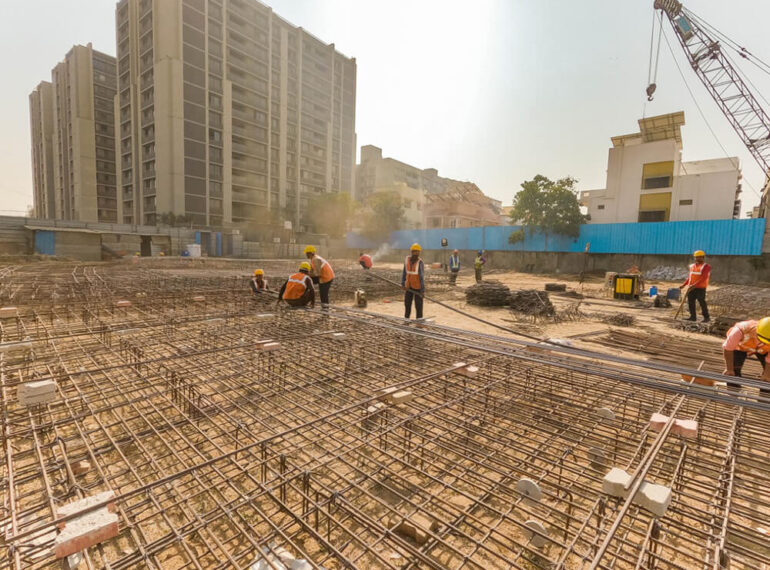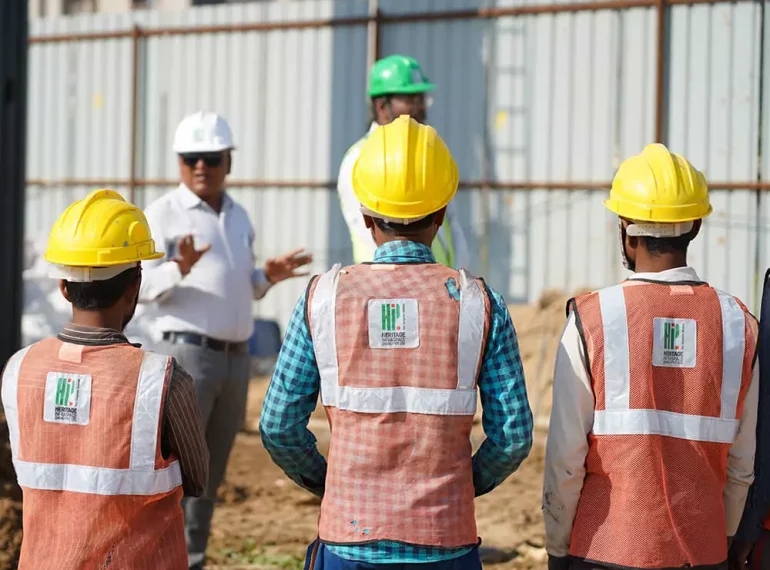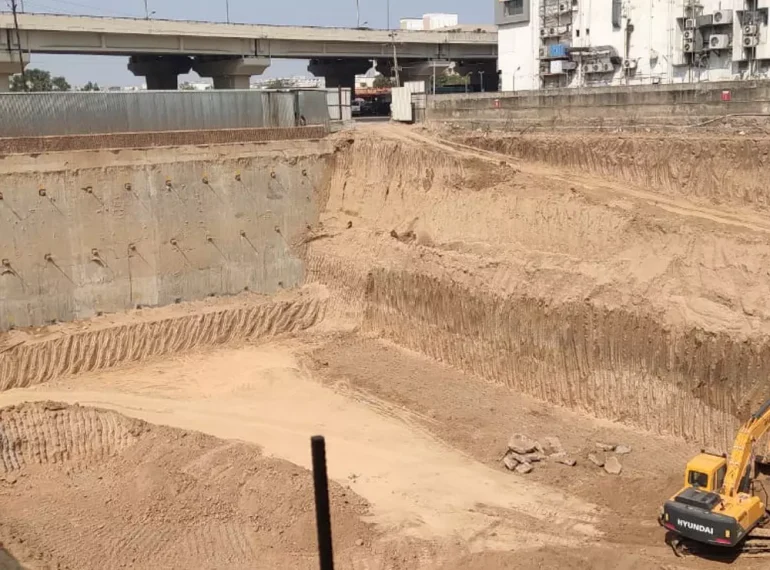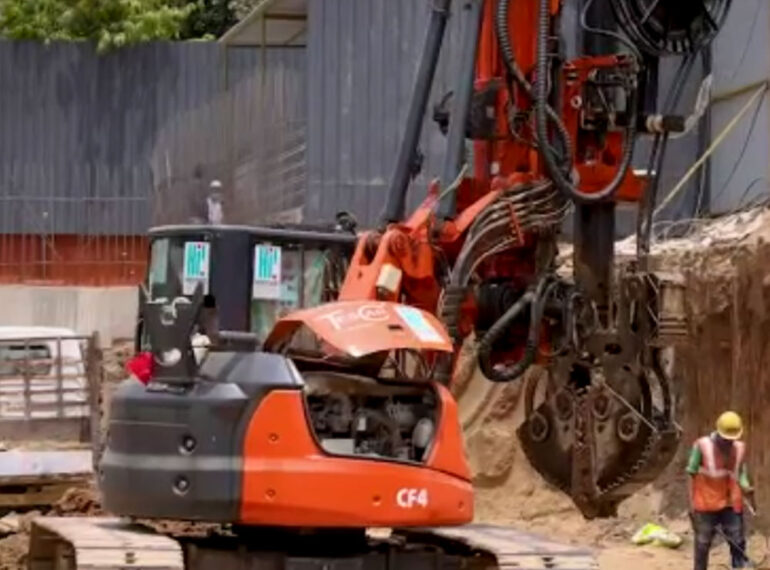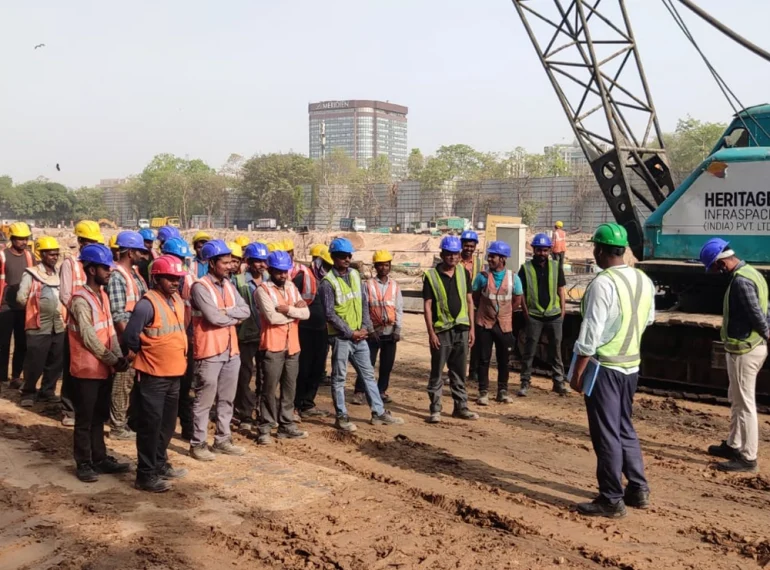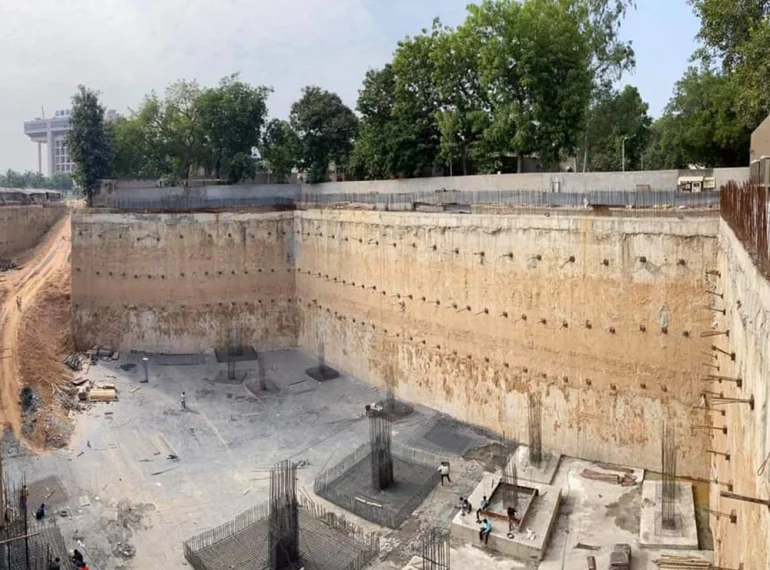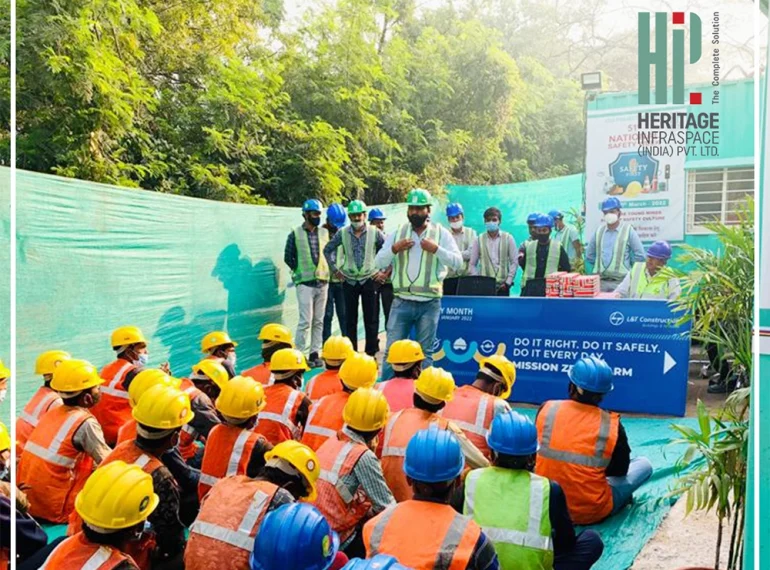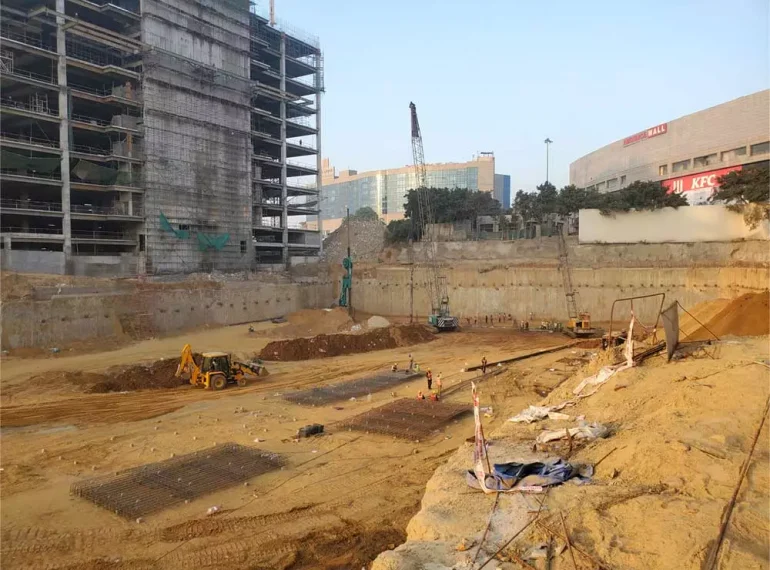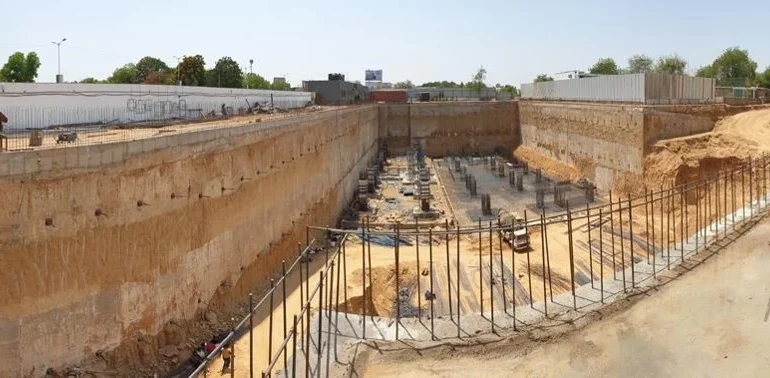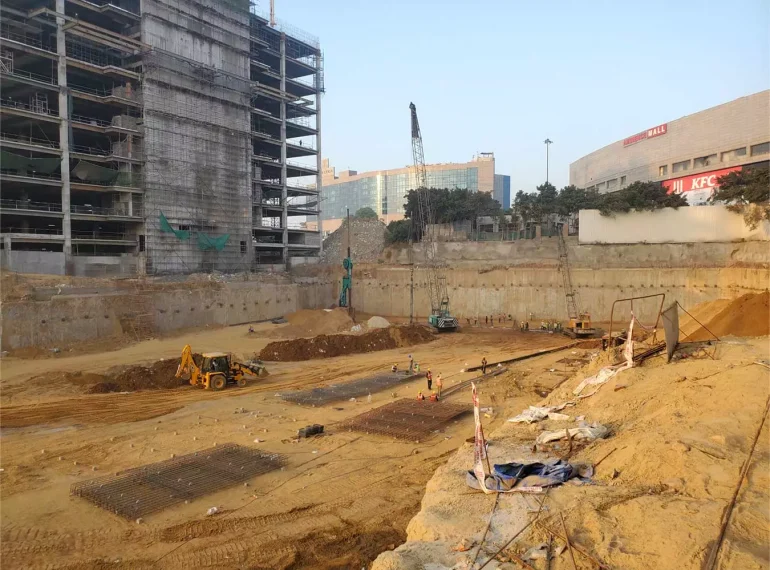As the leaders in deep basement construction and pioneers in diaphragm wall construction, the geotechnical engineers at Heritage Infraspace Pvt. Ltd. (HIPL) are often part of discussions and deliberations about what kind of retaining walls to be built for the excavation and construction of deep basements. And sheet piling has been a part of these conversations every time.
But despite the usage of diaphragm wall in dams, tunnels, underground enclosures and deep basements of commercial and residential buildings, why is sheet piling still an active option among civil engineers? We explore the purpose, benefits and different types of sheet piles, as well as the methods for their installation.
What is sheet piling?
Sheet piling is a form of reinforced concrete that is commonly used in basement construction. It is a good option for basement walls because it can be made from relatively thin materials, which means it costs less than other forms of reinforcement and it has a relatively low weight compared with other types of reinforcement.
Sheet piling can be used in place of conventional pilings in deep basements to support the wall thickness at the footings and to provide additional support to the wall above ground level. This is especially important when there are small irregularities or cracks in the ground or when the soil conditions are not ideal for traditional pile-driving methods such as auger drilling.
Advantages of sheet piling
Sheet piling offers numerous advantages, making it an indispensable technique for construction projects. Sheet piling helps in creating reliable structures with stable foundations. By employing sheet piling, construction projects can harness its exceptional capabilities to safeguard against soil erosion, retain soil in excavated areas and enhance the structural integrity of foundations.
Also read: Anchors in construction – A key aspect of diaphragm wall construction
One of the key advantages of sheet piling is its ability to provide a solid barrier against soil and water infiltration. This ensures the stability and longevity of structures, particularly in challenging environments. By strategically installing sheet piles, civil engineers can create a robust foundation that resists lateral pressures and prevents soil movement. Sometimes anchors in construction with sheet piling are required to strengthen the stability of the sheet piles with additional forces to the lateral passive resistance of the soil.
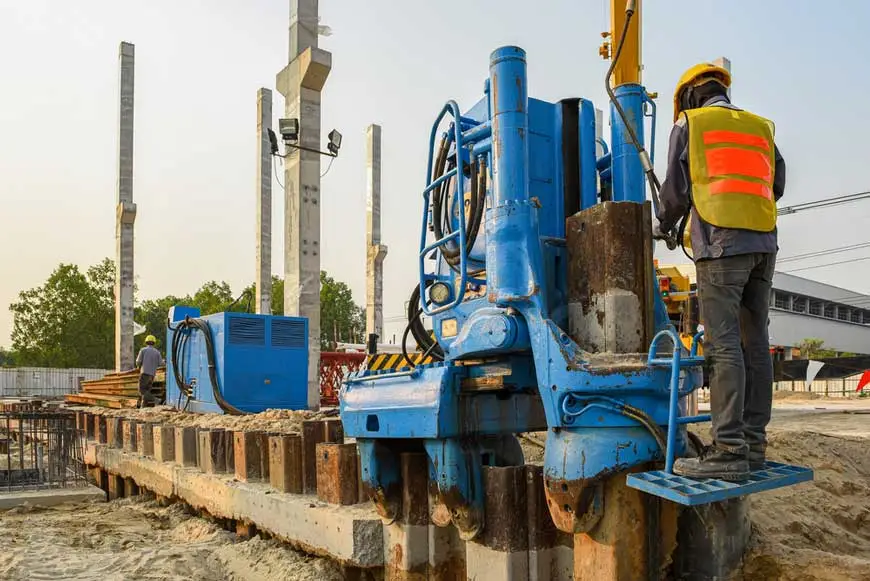
Sheet piling comes with many benefits for deep basement construction
Furthermore, sheet piling allows for efficient excavation in congested areas, optimising space utilisation and reducing construction timelines. Its versatility and adaptability make it suitable for various soil conditions, making it a preferred choice for a wide range of projects. Incorporating sheet piling into construction plans guarantees enhanced project performance, durability and cost-effectiveness.
Different types of sheet piles
Sheet piles come in various types, each designed to meet specific project requirements and soil conditions at the sheet piling site. Listed below are different types of sheet piles that ensure optimal performance and structural stability for deep basement construction.
Steel Sheet Piles: These are the most common type of sheet piles used in construction. They are made of high-strength steel and offer excellent durability and strength. Steel sheet piles are suitable for a wide range of applications, including waterfront structures, retaining walls and foundation systems.
Concrete Sheet Piles: Constructed using precast concrete, these sheet piles are known for their high resistance to corrosion and environmental factors. Concrete sheet piles are often used in marine environments, flood control projects and areas with aggressive soil conditions.
Vinyl Sheet Piles: These sheet piles are made of polyvinyl chloride (PVC) or other composite materials. They are lightweight, easy to handle and resistant to corrosion. Vinyl sheet piles are commonly used in temporary applications, such as cofferdams and trenches.
Composite Sheet Piles: Combining the benefits of different materials, composite sheet piles offer a balance of strength, durability and cost-effectiveness. They are engineered to provide optimal performance in various soil and water conditions.
Choosing the right type of sheet piles depends on factors such as soil characteristics, water conditions, project duration and budget. Civil engineers are supposed to assess the specific requirements of each project to determine the most suitable type of retaining wall, if it is sheet piles or diaphragm walls required in the top down construction, to ensure the success of the construction endeavours.
Methods for Sheet Piling Installation
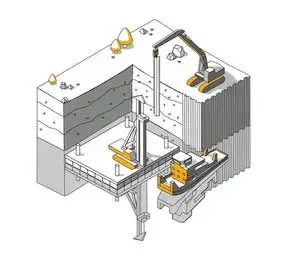
Deep basement projects require sheet piling in some cases
Sheet piling is a crucial component of various construction projects, providing stability and support to structures in challenging soil and water conditions. At Heritage Infraspace, we employ advanced techniques for sheet piling installation at the sheet piling site to ensure efficient and reliable results.
Vibratory Hammer: This method involves using a vibratory hammer to drive the sheet piles into the ground. The hammer generates vibrations that reduce soil resistance, allowing for easier penetration. It is an effective method for cohesive soils and sandy or gravelly soils.
Impact Hammer: In this method, an impact hammer is used to forcefully drive the sheet piles into the ground. The hammer strikes the top of the sheet pile, transmitting a powerful impact to penetrate the soil. It is suitable for driving sheet piles in dense or hard soils.
Press-in Method: This innovative method involves using hydraulic or mechanical presses to push the sheet piles into the ground gradually. The press-in method is particularly advantageous in areas with strict noise and vibration restrictions or when dealing with sensitive structures.
Pitch and Drive Method: This method involves pitching the sheet piles into the ground and then driving them to the desired depth using an impact hammer. It is a versatile method that allows for easy adjustments during installation.
Regardless of the method used, proper equipment, experienced operators and careful planning are essential for successful sheet piling construction. At Heritage Infraspace, we prioritise safety and precision at every step of the process, ensuring that the sheet piles are installed accurately and securely to provide long-lasting stability to your construction project.
Concluding thoughts
Sheet piling plays a vital role in providing stability, strength and durability to various construction projects. Whether it’s reinforcing the foundation of a dam, supporting excavation works, or protecting waterfront structures, sheet piling is a versatile and effective solution. To learn more about sheet piling and how Heritage Infraspace can assist you with your construction needs, visit www.heritageconstruction.in or email us at info@heritageconstruction.in. Let’s build a solid foundation for your next project together.





